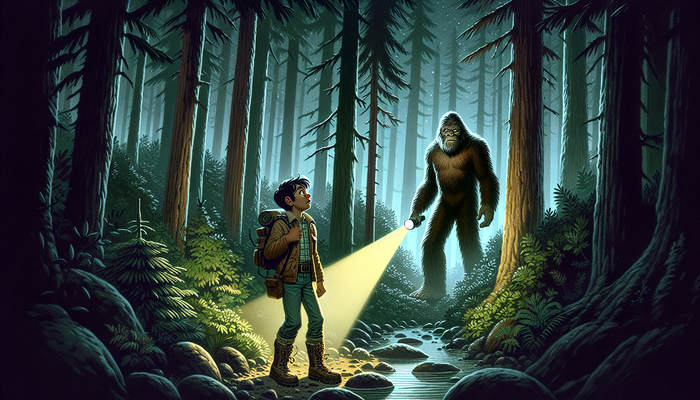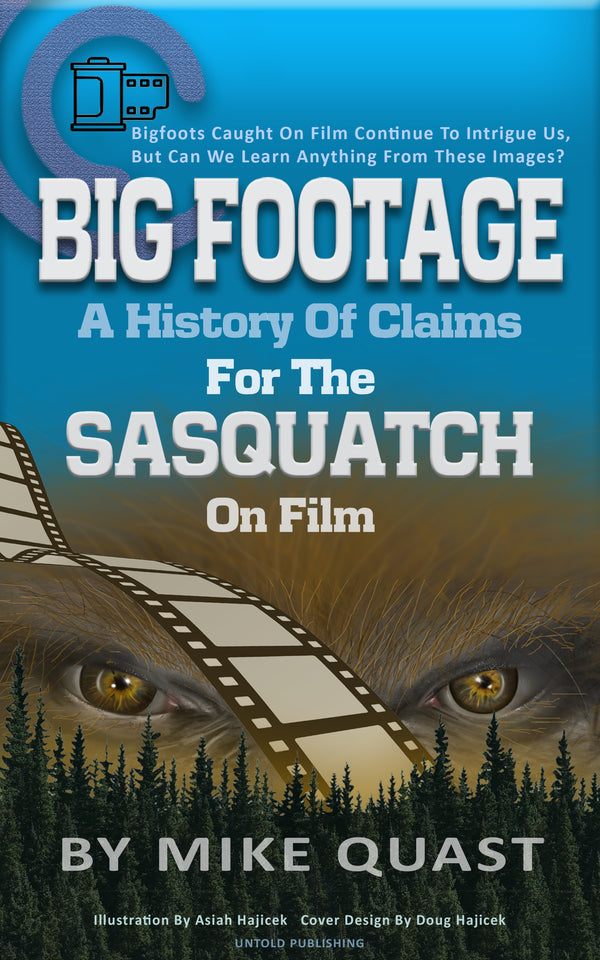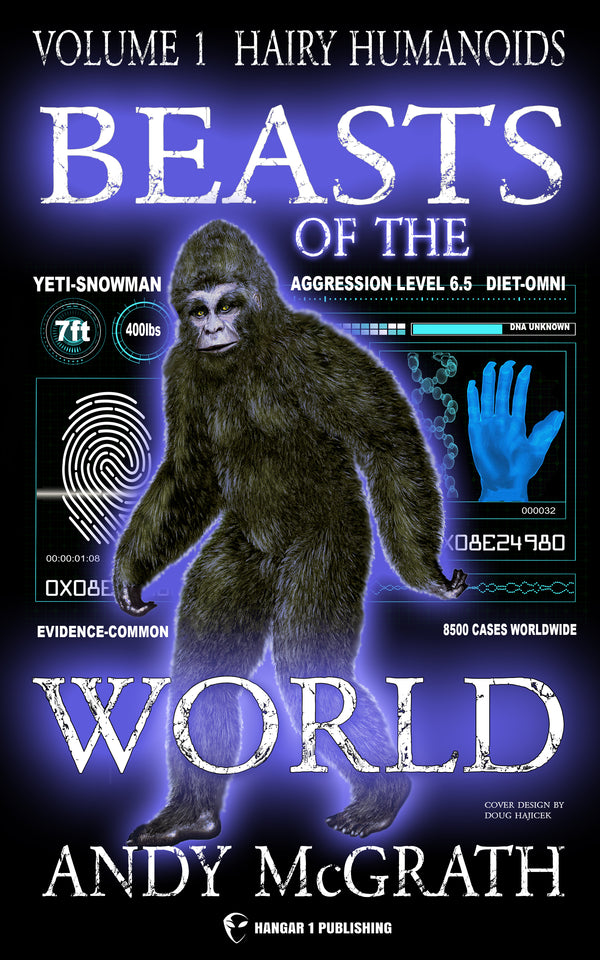Legendary Indiana Cryptids

By Jack Sullivan, Bigfoot Researcher
Indiana: Crossroads of Cryptozoology
Picture this: you're hiking through a dense Indiana forest, the sun dappling the trail through the leaves overhead. Suddenly, you hear a twig snap behind you. You whirl around, expecting to see a deer or maybe a raccoon. But instead, you lock eyes with...something else. Something that shouldn't be there. Something that, according to conventional wisdom, doesn't even exist.
Welcome to the world of Indiana cryptids.
For those unfamiliar, "cryptid" is a catch-all term for animals whose existence is unproven or disputed. We're talking Bigfoot, the Loch Ness Monster, the Chupacabra. Creatures that lurk at the edges of the map, in the shadows of what science has confirmed as real.
And as it turns out, the Hoosier State is a hotbed for these mysterious beasts. From the dense woods of the south to the windswept dunes of the north, Indiana is home to a menagerie of legendary creatures. Some are fearsome, others are impish. Some soar through the skies, others lurk in the depths of lakes and rivers. But they all have one thing in common: they've left an indelible mark on the imaginations of those who call this state home.
As a lifelong cryptozoology enthusiast and researcher, I've spent years tracking down the tales of Indiana's infamous monsters. I've pored over historical accounts, interviewed eyewitnesses, and tramped through the very woods and riverbanks where these creatures are said to roam. And let me tell you, the deeper you dive, the more fascinating—and sometimes, the more chilling—the picture becomes.
In this article, we'll be stalking the shadows together, unraveling the mysteries behind Indiana's most legendary cryptids. We'll meet a car-sized snapping turtle, a green-furred humanoid with a taste for terror, and impish forest-dwellers straight out of Native American lore. We'll explore aquatic enigmas like horse-headed lake serpents and dog-eared river mermaids. And of course, we'll delve into the state's rich history of Bigfoot sightings, from the earliest "wild men" reports to the haunting modern-day encounters.
But this isn't just a bestiary of bizarre beasts. As we'll see, these cryptid legends are deeply interwoven with Indiana's history, folklore, and identity. They've shaped small towns, inspired festivals, and even worked their way into pop culture. Ultimately, they speak to something universal: our fascination with the unknown, and the enduring power of a good monster story.
So grab your hiking boots and your sense of adventure. We're about to embark on a journey into the weird, the wild, and the wonderful world of Indiana cryptids. And who knows? Maybe, just maybe, we'll catch a glimpse of something extraordinary along the way.
The Beast of Busco: Fulk Lake's Shell-Shocking Snapper
Our first stop on this cryptozoological tour of Indiana takes us to the small town of Churubusco, nestled in the northeastern corner of the state. Blink and you might miss it—but ask any local about the Beast of Busco, and you're sure to get an earful.
The legend dates back to 1949, when a pair of fishermen on Fulk Lake reported seeing a gargantuan snapping turtle. And when I say gargantuan, I mean it made your average snapper look like a hatchling. Eyewitnesses described the beast as being as big as a dining room table, with a shell like the hood of a car. Some even claimed its head was the size of a child's.
Word of the sighting spread like wildfire, and soon, Churubusco was gripped by turtle fever. The beast was dubbed "Oscar," after the lake's previous owner Oscar Fulk, and the hunt was on. Crowds of curiosity-seekers descended on the small town, hoping to catch a glimpse of the now-infamous reptile.
The media frenzy reached a fever pitch when Fulk Lake's new owner, Gale Harris, made it his personal mission to capture Oscar. He tried everything from draining the lake to setting baited traps to even hiring a deep-sea diver—all to no avail. Oscar, it seemed, was as elusive as he was enormous.
As the weeks stretched into months, theories about Oscar's origins ran rampant. Was he a hoax dreamed up by locals to drum up tourism? An undiscovered species of mega-turtle? Or perhaps something more supernatural—a beast conjured from the depths of Fulk Lake's murky waters?
To this day, the truth remains as muddy as Oscar's supposed lair. The Beast of Busco was never captured, and sightings faded into memory. But his legend lives on. Churubusco still proudly proclaims itself "Turtle Town, U.S.A.," and every summer, the community gathers for Turtle Days, a festival celebrating their most famous resident.
For cryptozoology enthusiasts like myself, the case of the Beast of Busco is a classic: a tantalizing glimpse of something that shouldn't be, fueled by eyewitness accounts and media hype, but ultimately left unresolved. It's a reminder that sometimes, the mystery is more compelling than any solution could be. And it's a testament to the enduring power of a good monster story to put a small town on the map—and keep it there, even decades after the beast itself has vanished into the depths.
Mill Race Monster: Columbus's Clawed Creeper
Fast forward a quarter-century from the Beast of Busco's heyday, and we find ourselves in the city of Columbus, Indiana. It's November 1974, and the locals are on edge. Something sinister is stalking the shadows of Mill Race Park.
The first sighting came from a group of young women who claimed to have encountered a large, green-furred creature in the park. But it was the second report that really sent shivers down the community's spine. Tara Capaline and her friends were driving through the park late one night when the beast leapt onto the hood of their car, leaving deep scratch marks in the paint. Capaline described the monster as having a slimy, pale green face, matted dark fur, and long, razor-sharp claws.
Panic gripped the city. Mill Race Park was closed as armed posses combed the woods for the creature. Rumors flew about the monster's origins: was it an escaped lab experiment? An undiscovered species of primate? Or something even more sinister?
Despite the best efforts of the self-appointed monster hunters, the Mill Race Monster was never found. The sightings tapered off, and life in Columbus returned to normal. But for those who encountered the beast firsthand, the memory lingered.
Tara Capaline never backed down from her story. In a 2015 interview, four decades after that fateful night, she remained adamant: "We thought we were going to die. It was the most horrible thing you ever looked at."
The case of the Mill Race Monster remains one of Indiana's most chilling cryptid encounters. The consistency of the eyewitness descriptions, the physical evidence left on Capaline's car, and the sheer terror the sightings instilled in the community all suggest that something truly bizarre stalked the park that November.
Was it a hoax? A case of misidentification, fueled by fear? Or did Columbus residents truly come face to face with an unknown creature? The Mill Race Monster's enduring legacy—it even inspired an episode of the History Channel series MonsterQuest—is a testament to the power of these questions to capture our imaginations. And it's a reminder that sometimes, the most chilling monsters are the ones that hit closest to home.
Pukwudgies: Mounds State Park's Impish Inhabitants
Not all of Indiana's cryptids are quite so fearsome. For a glimpse of the state's more mischievous mysterious creatures, we turn to the legends of the Pukwudgies.
Pukwudgies (also spelled Puk-Wud-Jies) have their roots in the folklore of various Native American tribes, particularly the Wampanoag, Mohican, and Ojibwe. They're said to be small, troll-like beings, standing just two to three feet tall. Descriptions paint them as having pale, grayish skin, large ears and noses, and a shock of wild, light-colored hair. Some even claim they sport a ridge of porcupine-like quills down their backs.
While Pukwudgie legends crop up across the eastern United States, one of their most famous haunts is right here in Indiana: Mounds State Park, located near Anderson. The park is home to several ancient earthworks built by the prehistoric Adena culture, and it's around these mounds that Pukwudgie sightings tend to cluster.
One of the most notable Pukwudgie researchers was a man named Paul Startzman, an amateur archaeologist who claimed to have had several run-ins with the creatures in the 1920s. Startzman described the Pukwudgies as being mischievous and prone to playing tricks, but generally not malevolent. He even interviewed several other park visitors who claimed to have seen the creatures, including a woman named Eloise who encountered them as a child in the early 1900s.
So what are we to make of the Pukwudgies? Are they simply a figment of folklore, a way for Native American storytellers to explain the strange sounds and shadows of the forest? Or could there be a kernel of truth to the tales?
Some researchers have suggested that the Pukwudgies could represent a species of undiscovered primate, perhaps a North American relative of the Indonesian tarsier or African galago. Others believe they could be connected to fairies or other supernatural beings from European folklore, which melded with Native American traditions as settlers moved westward.
Whatever their origins, the Pukwudgies have become an indelible part of Indiana's cryptid lore. Mounds State Park even leans into the legend, hosting occasional "Pukwudgie hunts" where visitors can learn about the creatures and explore the park's ancient earthworks.
For me, the Pukwudgies represent the more whimsical side of cryptozoology. They're a reminder that not all unknown creatures are necessarily fearsome or monstrous—some may be impish, playful, even helpful at times. And they speak to the rich tapestry of folklore that underlies so many of our cryptid legends, hinting at ancient stories and beliefs that still resonate in our modern world.
Aquatic Enigmas: Lake Monsters and River Beasts
From the depths of Loch Ness to the murky waters of Lake Champlain, lake monsters are a staple of cryptid lore worldwide. And Indiana is no exception. The state's many lakes and rivers are said to be home to a veritable menagerie of aquatic enigmas, from serpentine beasts to piscine oddities.
Perhaps the most famous of these is the creature known as Meshekenabek, said to inhabit Lake Manitou near Rochester. According to Potawatomi legend, Meshekenabek is a massive serpent, with a head like a horse and a body covered in shimmering, yellow-spotted scales. The Potawatomi revered the lake as sacred—they called it "Devil's Lake," and would not fish or swim in its waters for fear of disturbing the beast.
Settlers' accounts seem to corroborate the Native legends. An 1838 article in the Logansport Telegraph describes a "monster" in Lake Manitou "sixty feet long, and looked like a huge snake." Another witness, a blacksmith, claimed to have seen the creature up close, describing it as having a head "three feet across" and a body "dingy colored with bright yellow spots."
Meshekenabek is just one of many aquatic cryptids said to lurk in Indiana's waters. In the Ohio River near Vevay, locals in the 1890s reported seeing "mud mermaids"—bizarre, amphibious creatures with yellowish skin, webbed hands, and dog-like ears. And in 1955, two women swimming in the Ohio near Evansville had a terrifying encounter with a "green-clawed beast" that allegedly grabbed one of them and dragged her underwater, leaving a vivid green handprint on her leg.
Even the Wabash River has its own resident monster: a colossal catfish, said to weigh up to 150 pounds, that lurks in the wreckage of a sunken train. Fishermen have long swapped tales of the beast, though its existence has never been confirmed.
So what are we to make of these aquatic enigmas? Could there really be undiscovered species lurking in Indiana's lakes and rivers?
It's certainly not impossible. The world's waterways have yielded surprising discoveries before—the coelacanth, a "living fossil" fish thought extinct for millions of years, was famously rediscovered off the coast of South Africa in 1938. And new species are still being found in the murky depths of rivers and lakes worldwide.
But there are also more prosaic explanations for many of these sightings. Sturgeon, paddlefish, and gar—all native to Indiana waters—can grow to impressive sizes and have been known to startle unsuspecting swimmers and boaters. And the power of suggestion can't be discounted—a glimpse of a floating log or a strange ripple on the water's surface can easily be transformed into a monster in the mind's eye, especially if there are preexisting legends to draw upon.
Ultimately, the truth behind Indiana's aquatic cryptids may never be fully known. But their stories remain a colorful part of the state's folklore, hinting at the mysteries that still lurk beneath the surface of our everyday world. And for those of us who love a good monster tale, that's more than enough reason to keep our eyes peeled the next time we're out on the water.
Hoosier Hominids: Bigfoot, Wild Men, and Hairy Humanoids
No tour of Indiana's cryptid lore would be complete without a deep dive into the state's rich history of Bigfoot sightings. From the earliest frontier tales of "wild men" to modern-day encounters with the Crosley Monster, Hoosiers have been reporting run-ins with hairy, humanoid creatures for centuries.
Some of the first accounts date back to the early 1800s, when settlers in the densely forested regions of southern and central Indiana began reporting sightings of "wild men"—tall, hirsute humanoids that seemed to dwell in the wilderness. In 1839, a newspaper in Michigan City reported on a "wild child," a 4-foot-tall creature covered in light brown hair, that was spotted roaming the hills near town. And in the 1840s, farmers in Elkhart County reported a spate of livestock killings by an unknown, man-like beast.
But it wasn't until the 20th century that Bigfoot fever really took hold in the Hoosier State.
From Bigfoot to UFOs: Hangar 1 Publishing Has You Covered!
Explore Untold Stories: Venture into the world of UFOs, cryptids, Bigfoot, and beyond. Every story is a journey into the extraordinary.
Immersive Book Technology: Experience real videos, sights, and sounds within our books. Its not just reading; its an adventure.



























